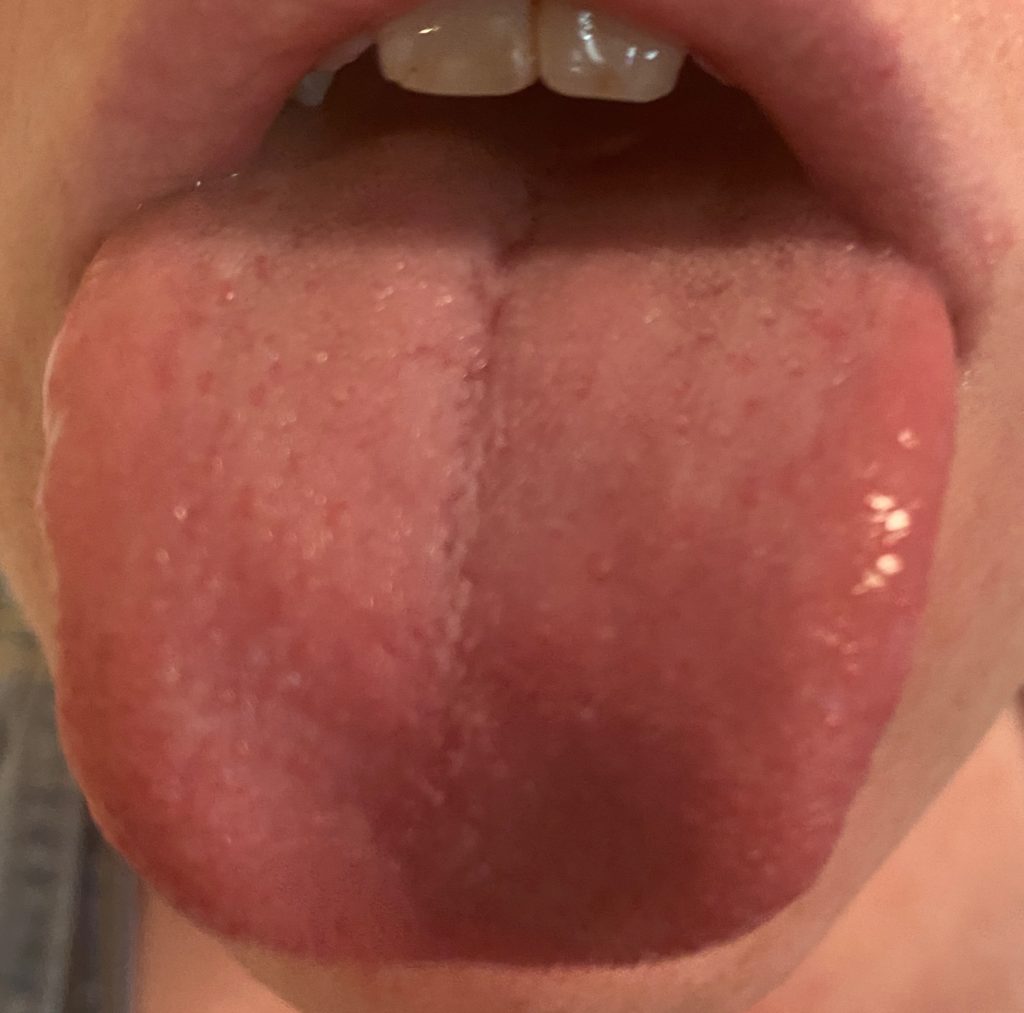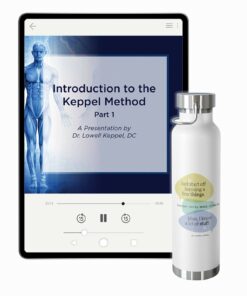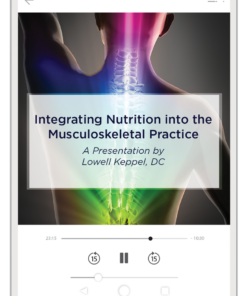Enjoy the latest installment of Dr. Lowell Keppel’s “Good to Know” series for practitioners.
The tongue can be a very good diagnostic tool. In fact, practitioners of Chinese Medicine use the tongue as a primary diagnostic method. But today I will be focusing more on the western medicine approach.
Below you see a fairly normal tongue. Notice the pink tint, the moist layer of clear saliva, and the taste buds. With that in mind, our discussion in this edition of Good to Know will focus on the diagnostic implications of a yellowish film on the tongue.
Go to the mirror and stick your tongue out. What do you see? Is the coating clear and moist, or is it thick and yellow? If a patient notice they have a yellow coating on their tongue, they will likely wonder what it is. And then, like I’ve pointed out before, they will consult Dr. Interweb.
And that’s when the confusion will begin. For example, this article from Medical News Today says: “Ordinarily, yellow tongue is a harmless condition that causes a thick, yellowish coating on the tongue. Yellow tongue tends to occur when dead skin cells, bacteria, or discoloring particles become trapped or buildup on the tongue’s surface.”
Though this information is not particularly helpful, at least the article goes on to point out some useful information, such as a yellow tongue can be associated with candida, gastric issues, and few other potential issues.
Perhaps they end up brushing their tongue, only to discover the film is back in a few short hours, or their dentist or doctor instructs them to brush and scrape the tongue, but as usual this does nothing to address the underlying cause.
Here is a picture of a tongue with yellow film.
This tongue belongs to a male patient with chronic hip issues. After noting the whitish-yellowish coating, I observed his digestive system by palpating his small intestine. That’s when I found areas of his intestines that were tight and tender. When I palpated the intercostal spaces of his eighth, ninth, and tenth ribs on both sides, I found that they were very tender as well. These are known as the neuro-lymphatic reflexes of the small intestines.
Using Muscle Response Analysis (MRA)—which you can learn about through an e-learning course from SRP—I determined that DiGest Forte from MediHerb would be the best course of action. He later reported that his hip pain had improved and his tongue cleared up. (In applied kinesiology, the small intestines have a relationship with the abdominal muscle, and this patient’s quadricep muscles were not doing their job of supporting the pelvis bones.)
The next picture is of a female patient with recurring and chronic low back pain. After determining that a chronic candida yeast infection was the underlying cause of her symptoms, we used Lactic Acid Yeast wafers from Standard Process. Candida yeast is a normal part of the intestinal flora, but if the flora is disrupted by chlorinated water, antibiotics, a history of diarrhea or constipation, or a poor diet of refined food and refined white sugar, the opportunistic candida yeast takes over. Lactic acid restores the intestinal flora by feeding the beneficial yeast and bacteria, which can then repopulate and overcome the candida yeast.
I also recommended that she remove all carbohydrates from her diet. Sugar (aka carbohydrates) are the food source of pathogenic yeasts. So Lactic Acid Yeast wafers actually serve a few purposes:
- It converts carbohydrates into lactic acid, so the pathogenic yeast no longer has a food supply and ultimately starves.
- It acidifies the intestines. (Yes, I said acidify—your large intestines must have an acidic pH of 6.5.)
- Finally, the proper pH creates an environment suited for your individual bacterial profile, thus allowing it to flourish.
This patient’s chronic low back condition was resolved, and her gut health substantially improved. She now regularly checks her tongue for this film. If it returns, she knows her digestive system has been compromised (by drinking chlorinated water or eating too many refined carbohydrates). To resolve this problem, she must change her diet and resume her supplements.
To recap, looking at the patient’s tongue is very easy and doesn’t take much time. If you are doing tele-health visits, you should check every patient for this vital observational sign.
If you see the film on the tongue, have the patient do the spit test (yes, a lovely name).
Instructions for Spit Test
- Spit into a clear glass of water upon waking, before they do anything else.
- Wait fifteen minutes.
- Check to see if the spit has developed “legs.” (In other words, if it sank to the bottom of the glass.)
- If so, this is an indicator of pathogenic yeast.
If the patient is in the office, palpate the intestines. If you notice areas of tenderness, have the patient chew on a Lactic Acid Yeast wafer, then repalpate the tender spots. Did they improve? If so, recommend the Lactic Acid Yeast.
Other considerations from Standard Process and MediHerb:
- Zymex (SP): Improves the acidity of the bowel; detoxifies the system.
- Spanish Black Radish (SP): Acts as a mild laxative by bringing water into the bowel.
- Gut Flora Complex (MH): Assists in the “weeding out” of the pathogenic yeast and bacteria.
Looking at the tongue is a simple and reliable observational tool that will help guide you in the right direction to help your patients.
In the words of Standard Process mentor Dr. Scott Walker, DC, Keep it simple. simple works!
More to come!
Image from iStock/Deagreez (main), post images from Dr. Keppel.








